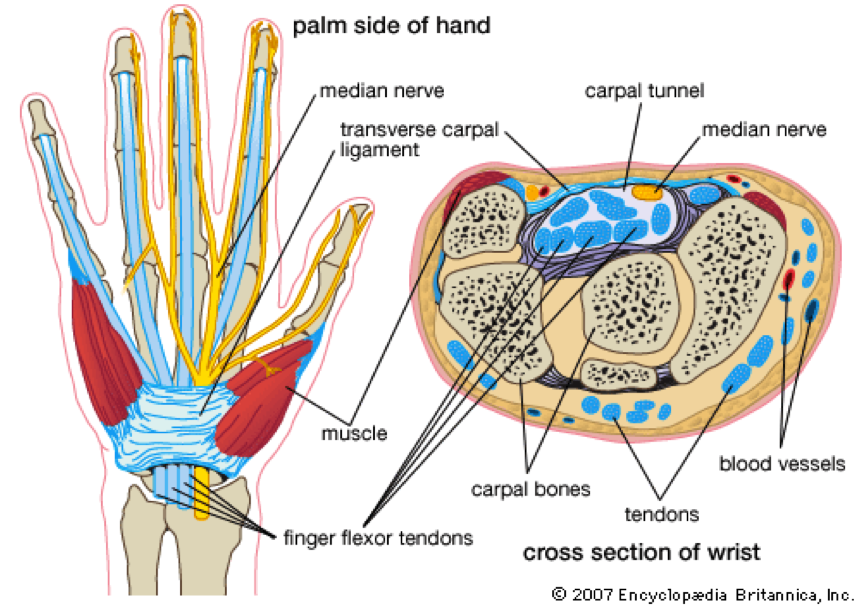Do you feel numbness or weakness in your hands when you wake up or go to sleep? Do you have trouble holding or grasping objects, like a leash or the lid of jar? You may suffer from Carpal Tunnel Syndrome (CTS), a musculoskeletal disorder associated with but not necessarily caused by repetitive movement of the wrist in a workplace or at one’s leisure. Certain conditions such as obesity, arthritis, diabetes, thyroid disease, and trauma are all proven to be triggering factors to CTS.
CTS most commonly affect people who work with their hands. Women in manufacturing industries, musicians, and people who work with computers are commonly at risk. CTS is the second most common reason, after back-pain, for seeking medical care, among both men and women. People with CTS commonly complain of numbness, tingling, or pain of the wrist, often at night and aggravated by repetitive motion. If not treated, people with CTS can lose their ability to grip and become permanently disabled.
As you can see in the diagram below, the median nerve passes through the carpal tunnel, a narrow passageway on the inner surface of the wrist, where muscle-flexing tendons pass through to the digits of the hand. The problems arise when the tendons become inflamed, either through repetitive use or other factors, such as those listed above, compressing the median nerve. This causes symptoms that are often, though not necessarily, attributed to CTS.
“A common nerve disorder that often appears alongside carpal tunnel syndrome is trigger finger, where swelling of the tendons of the index finger or thumb results in soreness or locking of the digit in a flexed position,” writes John Hopkins Health. De Quervian’s disease is another possibility.

Hands on a Keyboard: A Guide for Musicians and Computer Users by Shmuel Tatz, PT, PhD & Vladimir Mayoroff, MD, mentions a few exercises for the wrist using a ball the size of a soccer ball. The following exercises can be done at your own leisure:
Exercise 1: “A warm-up for the fingers and the wrists.”
- Hold ball at shoulder-height with half-bent fingers.
- Gently toss upwards and catch on bent fingers. Repeat.

Exercise 2: “Strengthens the tendons in the fingers, wrists and shoulder muscles.”
- A. Hold ball at shoulder-height with half-bent fingers.
- Gently toss ball upward, spinning it at the same time.
- While the ball is in air, return hand to starting position.
- When ball lands, toss the ball upward again. (Repeat)
- Try to keep hand relaxed. Repeat until hand becomes tense.
- Try spinning in the opposite direction. Try with the other hand.
Exercise 3: “For the wrists, fingers, and all the hand muscles.”
- Bounce ball on ground while spinning it. Repeat.
- Try spinning in the opposite direction. Try with the other hand.
In order to avoid permanent damage, and to save time and costs as well, it is crucial to seek care immediately. Initial treatment includes immobilization through a wrist splint or brace, in order to keep the swelling in check. Localized therapy, however, is the most important method to manage CTS. Treatments such as body tuning not only relieve the swelling but reduce the pain of CTS, and most importantly, body tuning minimizes the necessity for invasive surgery, making CTS a more manageable condition.
